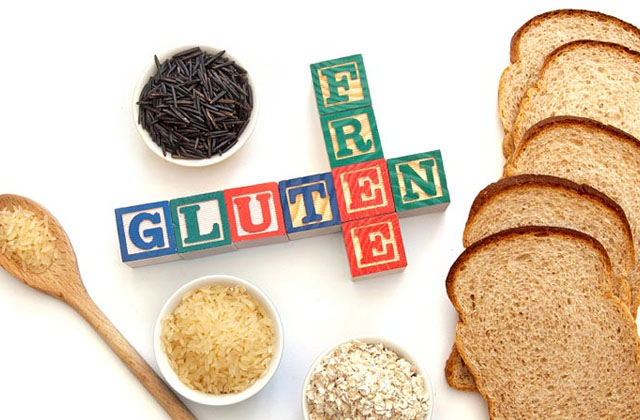Does your child have frequent stomach aches? Are those just excuses to miss school or is it entirely something else? Stomach aches can be indicative of multiple diseases. One of those diseases is a life-long condition called celiac disease. So, what is celiac disease?
What is Celiac Disease?
Celiac disease is a condition in which the body mistakes a protein called ‘gluten’ as a foreign body and creates anti-bodies against it. These antibodies then attack the person’s intestinal villi. Villi are microscopic finger like projections in the intestine. These villi increase the surface area of the intestine and help to absorb minerals and nutrients.
When antibodies against gluten attack these villi, they flatten and damage them. Due to these damaged villi, the intestines are no longer able to absorb the required nutrients. This results in many stomach related symptoms (gastro-intestinal symptoms) and other extra intestinal symptoms.
However, if the patient abstains from taking gluten in their diets, the intestine heals back and the person can lead a normal life.
Read More: 21 Foods To Avoid with A Celiac Disease Diet Plan
What is gluten?
Gluten is a protein found in wheat, rye and barley. It is found in food material like bread, beer, pasta and even roasted chicken if it is cooked in gluten containing butter. Normally, there is no reason to have gluten-free food but for people with celiac disease even minute amounts of gluten can create havoc in their bodies. This minute amount of gluten can be obtained by small bread crumbs while using the same toaster, storing gluten and non-gluten food together etc. This is called cross-contamination.
Why does celiac disease occur in children?
Celiac disease does not have any known etiology. However, it is found to have a very strong genetic predisposition. A child with any first degree relative suffering from celiac disease has a 5-10% chance of having it. Celiac disease is fairly common in Europe and America with almost one in every 133 people suffering for it.
Some children may not have celiac disease since birth but may develop it a little late, especially following a stressful condition like an injury. The age on which the disease presents depends on the amount of gluten in the child’s diet and other environmental factors like injury, mental stress etc.
Read More: 21 Foods that Worsen Irritable Bowel Syndrome in Children
Celiac Disease in Children: Signs, Symptoms, Diagnosis and Treatment
Signs and symptoms of celiac disease
There may be two types of signs and symptoms that a child suffering from celiac disease may have: The gastrointestinal symptoms and the non-GI symptoms.
- The gastro-intestinal symptoms are:
- Distended abdomen.
- Flatulence (gas)
- Severe stomach ache usually peaking at an hour after meal. If the infant starts crying soon after gluten containing meal and the crying worsens on touching the abdomen, then the toddler may have celiac disease.
- Smelly diarrhea.
- Decreased appetite
- Vomiting
Only 20-30% children with celiac disease have stomach symptoms.
- Other symptoms that the infant may express are:
- Weight loss
- Failure to thrive
- Irritability
- Anemia
- Anorexia
- Itchy skin rashes also called dermatitis herpetiformis
- Mouth ulcers and sores called aphthous ulcers
- Some atypical symptoms of celiac disease are:
- Stunted growth
- Delayed puberty
- Ache in bones
- Damaged or discolored enamel (teeth)
- Mood swings like anxiety, depression, panic attacks etc.
Presentation of celiac disease
Celiac disease may have four probable presentations in children. These presentations show a correlation with age. These presentations are as follows:
Typical presentation
Gastro-intestinal symptoms are very prominent in this type of presentation. The intestinal biopsy shows atrophied villi. This presentation usually appears between ages 9 months to 24 months. This is the first time gluten is introduced to the infant’s diet. If gluten is introduced along with breast feeding, then symptoms are delayed and non-gi in nature.
Atypical presentation
Atypical presentation usually correlates with children of the age 3 to 10 years. They complain of mild gi symptoms, decreased height and weight, delayed puberty and other atypical symptoms. The blood serology show high amounts of anti-gluten antibodies and the biopsy shows villous atrophy.
Silent presentation
People with this type of presentation do not show any apparent symptoms but celiac disease may be detected on biopsy or by serology. This usually occurs in teenagers and young adults where only visible symptoms are mood swings and anemia.
Potential presentation
In this type of presentation, antibodies are present in blood but there are no degenerative changes in the intestinal villi. The symptoms may be present or absent. This is the earliest detected stage of celiac disease. This presentation may progress to any of the other presentations.
Read More: Top 7 Causes for Child Vomiting
Diagnosis of celiac disease
The diagnosis of celiac disease can be made by a simple blood test which is basically screening for anti-gluten antibodies. If the test is positive, biopsy of intestine is done to confirm the diagnosis. The screening test is usually not accurate for children up to 3 years since they may have maternal antibodies in their blood. So, symptoms and genetic tracing form the basis of diagnosis for these children. It is important to keep the people being tested on gluten containing diet throughout the procedure.
Treatment of celiac disease
Celiac disease is a lifelong condition. The only treatment is to have a gluten free diet. The good news is that almost everything we eat can be made gluten free. Even minute amounts of gluten can be catastrophic. So, it is always better to have separate dishes, toasters and other equipment. Only foods and beverages with gluten content less than 20 ppm are allowed. Following gluten free diet not only allows the patient to lead a perfectly healthy life but it also prevents any complications including malignancies.
People with celiac disease are usually deficient in certain vitamins and minerals specially vitamin B complex, vitamin D, calcium and sometimes protein. This can be remedied by daily, gluten free multivitamins.
A dietitian expert in celiac disease is recommended.
A follow up with the physician should be done 3-6 months after its initial diagnosis to identify nutritional deficiencies and assess any problems the child may be facing. Antibody test should be negative by the 6-12 month.
Celiac disease is a very manageable condition. With the right diagnosis and the correct diet plan can allow the child to lead a very normal life-style. Moreover, many support groups are available and joining a support group may help understand the best gluten free recipes and products apart from being a great mental support.
Read More: Health Benefits of Barley in Baby Food













